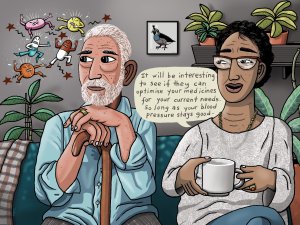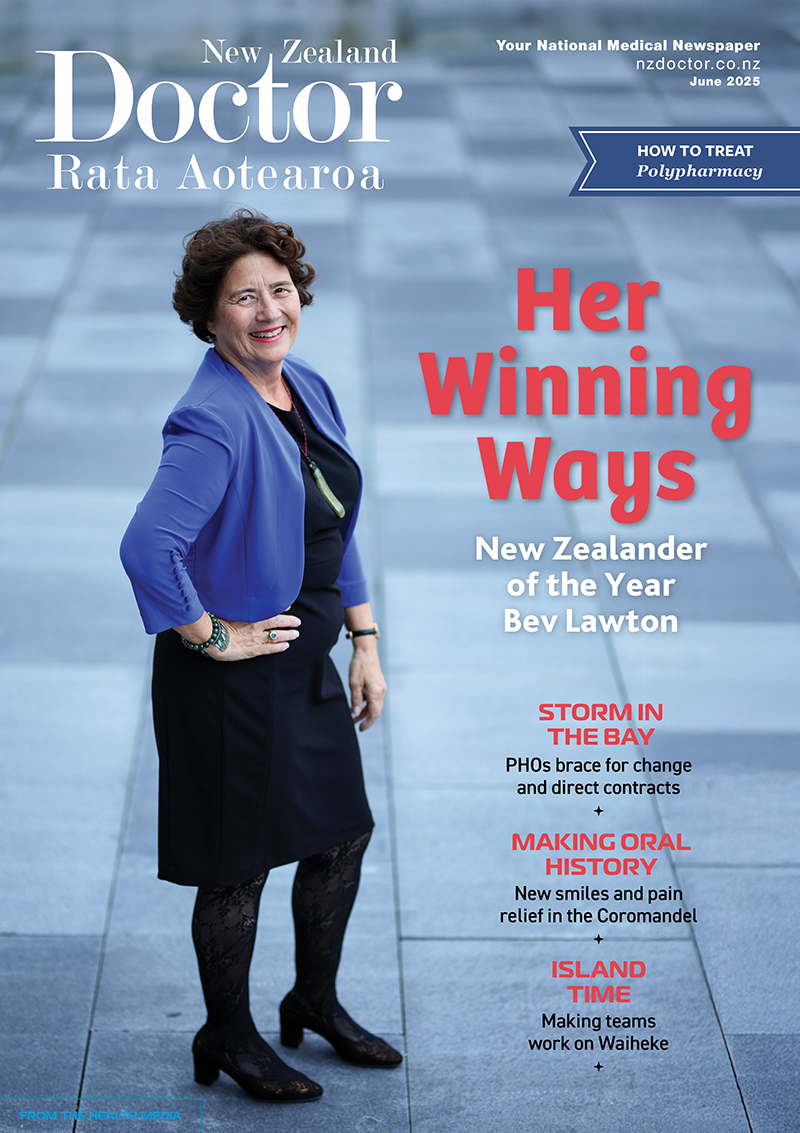For older people and frail people, the long-term benefit of medicines reduces and the potential for harm from adverse effects increases. When the benefit–risk balance changes in this way, medicine review and optimisation are important to simplify the therapeutic regimen, reduce inappropriate medicines and minimise risks. In this article, pharmacist prescriber Linda Bryant uses two case studies to illustrate important considerations during medicine reviews
New technology could help ease ICU pressure
New technology could help ease ICU pressure

UC researchers are exploring how new technology could ease Intensive Care Unit (ICU) pressure and position New Zealand as a global leader in healthcare automation.
ICU spending accounts for around 1% of New Zealand’s Gross Domestic Product and approximately 10% of the country’s total healthcare expenditure. As demand for healthcare continues to outpace funding and resources, the pressure on ICUs is intensifying.
University of Canterbury (UC) | Te Whare Wānanga o Waitaha researchers Distinguished Professor Geoff Chase and Dr Lui Holder-Pearson aim to boost ICU productivity through digitally-led, personalised, and automated care, using world-leading Digital Twin (DT) and Digital Cockpit technologies.
“We are at a tipping point in being able to provide quality healthcare for everyone. What we do next will be key,” Distinguished Professor Chase says.
“Despite growing demand and abundant data from medical devices and systems, healthcare still lacks effective automation. Effective healthcare automation hinges on accurately predicting how patients will respond to treatment.”
Distinguished Professor Chase says the portion of healthcare costs not funded by the government, and instead borne by New Zealanders, grows by 4–5% annually.
His research team aims to tackle two major challenges to ICU efficiency: the lack of a central system to access and manage data from medical sensors and devices, and the absence of validated DT models that can predict how individual patients will respond to treatment.
“Our research programme will develop both the foundational automation platform – our Digital Cockpit – and state-of-the-art, clinically validated, natively integrated DT applications that, together, will unlock healthcare automation.”
Distinguished Professor Chase says Health DTs are a digital model of someone’s response to care. They use available data to guide care in real time and accurately predict how someone will respond to treatment to optimise outcomes. A Digital Cockpit will turn the paper sheets used at hospital bedsides into a digital format. This will allow automated use of approved medical devices that can easily work together.
Distinguished Professor Chase believes this research programme could put New Zealand at the forefront of the emerging MedTech industry and deliver significant economic benefits by reducing Health/ACC costs and improving patient outcomes.
This research is a collaboration with the UC Centre for Good Work, the Johner Institute, the Auckland Bioengineering Institute and Taiuru Associates.




![New Zealand Doctor Rata Aotearoa editor Barbara Fountain, RNZCGP president elect and Tauranga-based specialist GP Luke Bradford, Ministry of Health clinical chief advisor rural health Helen MacGregor, and Health New Zealand Te Whatu Ora clinical director primary and community care Sarah Clarke [Image: NZD]](/sites/default/files/styles/thumbnail_cropped_100/public/2025-05/1.%20Barbara%20Fountain%2C%20Luke%20Bradford%2C%20Helen%20MacGregor%20and%20Sarah%20Clarke.jpg?itok=091NETXI)
![Ngāti Porou Oranga specialist GP Elina Pekansaari and Te Nikau Hospital specialist in general practice and rural hospital medicine David Short [Image: NZD]](/sites/default/files/styles/thumbnail_cropped_100/public/2025-05/2.%20Elina%20Pekansaari%20and%20David%20Short.jpg?itok=h5XfSBVM)
![Locum specialist GP Margriet Dijkstra and OmniHealth regional operations manager (southern) Patricia Morais-Ross [Image: NZD]](/sites/default/files/styles/thumbnail_cropped_100/public/2025-05/3.%20Margriet%20Dijkstra%20and%20Patricia%20Morais-Ross.jpg?itok=jkrtRfJC)
![Golden Bay dairy farmer and dairy industry health and safety doctoral student Deborah Rhodes, and Golden Bay Community Health specialist GP Rachael Cowie [Image: NZD]](/sites/default/files/styles/thumbnail_cropped_100/public/2025-05/4.%20Deborah%20Rhodes%20and%20Rachael%20Cowie.jpg?itok=oM0_GcJc)
![Hauora Taiwhenua clinical director rural health Jeremy Webber, Australian College of Rural and Remote Medicine president Rod Martin and Observa Care director of business operations Deborah Martin, the wife of Dr Martin [Image: NZD]](/sites/default/files/styles/thumbnail_cropped_100/public/2025-05/5.%20Jeremy%20Webber%2C%20Rod%20Martin%20and%20Deborah%20Martin%2C%20the%20wife%20of%20Dr%20Martin.jpg?itok=P_aGmX_H)
![Spark Health chief executive John Macaskill-Smith and client director Bryan Bunz [Image: NZD]](/sites/default/files/styles/thumbnail_cropped_100/public/2025-05/6.%20John%20Macaskill-Smith%20and%20Bryan%20Bunz.jpg?itok=5yJvVZ0I)
![Associate dean (rural) Kyle Eggleton, third-year medical student Roselle Winter, and second-year pharmacy student Alina Khanal, all from the University of Auckland [Image: NZD]](/sites/default/files/styles/thumbnail_cropped_100/public/2025-05/7.%20Kyle%20Eggleton%2C%20Roselle%20Winter%20and%20Alina%20Khanal.jpg?itok=RQLd3TEs)
![Health New Zealand Te Whatu Ora clinical editor and specialist in general practice and rural hospital medicine Anu Shinnamon, and Whakarongorau chief clinical officer Ruth Large [Image: NZD]](/sites/default/files/styles/thumbnail_cropped_100/public/2025-05/8.%20Anu%20Shinnamon%20and%20Ruth%20Large.jpg?itok=i5TMswY9)
![Te Kahu Hauora Practice specialist GP Jane Laver and Ngāti Kahungunu ki Tāmaki-nui-a-Rua chief operations manager Tania Chamberlain [Image: NZD]](/sites/default/files/styles/thumbnail_cropped_100/public/2025-05/9.%20Jane%20Laver%20and%20Tania%20Chamberlain.jpg?itok=jtMklaCZ)